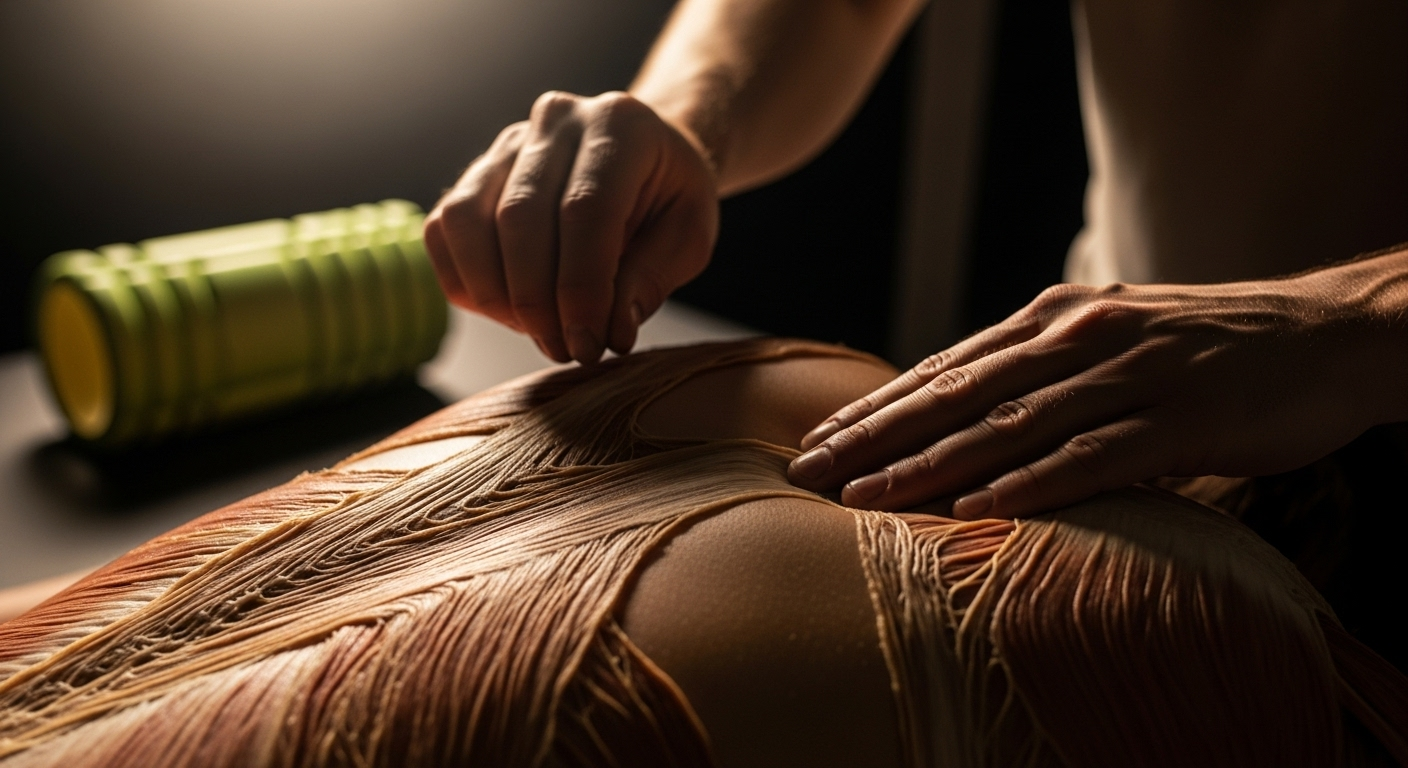Myofascial Release: The Hidden Key to Fitness and Beauty
The world of fitness and beauty is constantly evolving, with new trends and techniques emerging regularly. However, one powerful practice has been quietly revolutionizing both industries: myofascial release. This innovative approach to body maintenance and enhancement has been gaining traction among athletes, fitness enthusiasts, and beauty aficionados alike. Myofascial release offers a unique blend of physical and aesthetic benefits, making it a game-changer in the pursuit of overall wellness. As we delve into the fascinating world of myofascial release, we'll explore its origins, mechanisms, and the myriad ways it's transforming how we approach fitness and beauty.

Myofascial release is a hands-on technique that aims to address these issues by applying gentle, sustained pressure to the fascia. This process helps to release tension, improve flexibility, and restore optimal function to the body. Unlike traditional massage, which focuses primarily on muscles, myofascial release targets the connective tissue itself, offering a more holistic approach to body maintenance.
The Historical Roots of Myofascial Release
While the term “myofascial release” is relatively modern, the concept of manipulating fascia for healing purposes has ancient roots. Traditional Chinese medicine and other Eastern healing practices have long recognized the importance of connective tissue in overall health. However, it wasn’t until the mid-20th century that Western medicine began to fully appreciate the significance of the fascial system.
Dr. Ida Rolf, an American biochemist, is often credited with pioneering the modern understanding of fascia and its manipulation. Her work in the 1960s, which she called Structural Integration (later known as Rolfing), laid the foundation for many of the myofascial release techniques used today. Since then, numerous practitioners and researchers have contributed to the field, refining techniques and expanding our knowledge of fascial anatomy and physiology.
The Science Behind the Magic
Recent scientific research has shed light on the mechanisms underlying myofascial release. Studies have shown that the fascia contains a high concentration of mechanoreceptors, which are sensory neurons that respond to mechanical pressure or distortion. When pressure is applied during myofascial release, these receptors send signals to the central nervous system, triggering a cascade of physiological responses.
One of the key effects of myofascial release is the stimulation of the parasympathetic nervous system, which promotes relaxation and reduces stress. This not only helps to alleviate tension in the fascia itself but also contributes to overall well-being. Additionally, myofascial release has been shown to improve blood flow and lymphatic drainage, which can have significant benefits for both fitness and beauty.
Myofascial Release in Fitness: Enhancing Performance and Recovery
In the fitness world, myofascial release has become an indispensable tool for athletes and exercise enthusiasts. By addressing fascial restrictions, this technique can significantly improve flexibility, range of motion, and overall athletic performance. Many professional sports teams now incorporate myofascial release into their training and recovery protocols.
One of the most popular forms of self-myofascial release in fitness is foam rolling. This technique involves using a cylindrical foam roller to apply pressure to various parts of the body, effectively massaging the fascia. Regular foam rolling has been shown to reduce muscle soreness, improve recovery time, and enhance overall muscle function.
Beyond foam rolling, more advanced myofascial release techniques are being adopted in fitness settings. Tools such as massage balls, therapy sticks, and even specialized instruments are being used to target specific areas of fascial tension. These techniques allow for a more precise and effective approach to addressing individual needs and concerns.
The Beauty Connection: Myofascial Release for Skincare and Anti-Aging
While the benefits of myofascial release for fitness are well-established, its potential in the beauty industry is just beginning to be fully realized. The fascia plays a crucial role in skin health and appearance, and addressing fascial restrictions can have profound effects on the skin’s texture, tone, and overall vitality.
One of the most exciting applications of myofascial release in beauty is facial rejuvenation. Techniques such as facial massage and specialized tools like jade rollers and gua sha stones work by releasing tension in the facial fascia. This can help to improve circulation, reduce puffiness, and promote a more youthful, radiant complexion.
Moreover, myofascial release can contribute to improved posture and body alignment, which has indirect but significant effects on appearance. By addressing fascial restrictions throughout the body, individuals can achieve a more balanced, aligned posture, which can make them appear taller, more confident, and even slimmer.
Integrating Myofascial Release into Your Routine
For those looking to incorporate myofascial release into their fitness and beauty routines, there are several approaches to consider. Self-myofascial release techniques, such as foam rolling and using massage balls, can be easily integrated into a daily workout or recovery routine. These practices can be particularly beneficial when done before exercise to improve flexibility and after exercise to aid in recovery.
In the realm of beauty, incorporating facial myofascial release techniques into a skincare routine can yield impressive results. Using tools like jade rollers or performing gentle facial massage can help to improve skin texture, reduce tension, and promote a healthy glow. It’s important to note that while these techniques are generally safe, it’s always advisable to consult with a skincare professional before starting any new regimen.
For those seeking a more intensive approach, working with a trained myofascial release practitioner can provide targeted, personalized treatment. These sessions can address specific areas of concern and offer a more comprehensive approach to fascial health.
As the fields of fitness and beauty continue to evolve, myofascial release stands out as a powerful, versatile technique that bridges the gap between physical performance and aesthetic enhancement. By addressing the often-overlooked fascial system, this innovative approach offers a holistic path to improved wellness, both inside and out. As research in this area continues to grow, we can expect to see even more exciting applications of myofascial release in the future, further cementing its place as a cornerstone of modern fitness and beauty practices.





